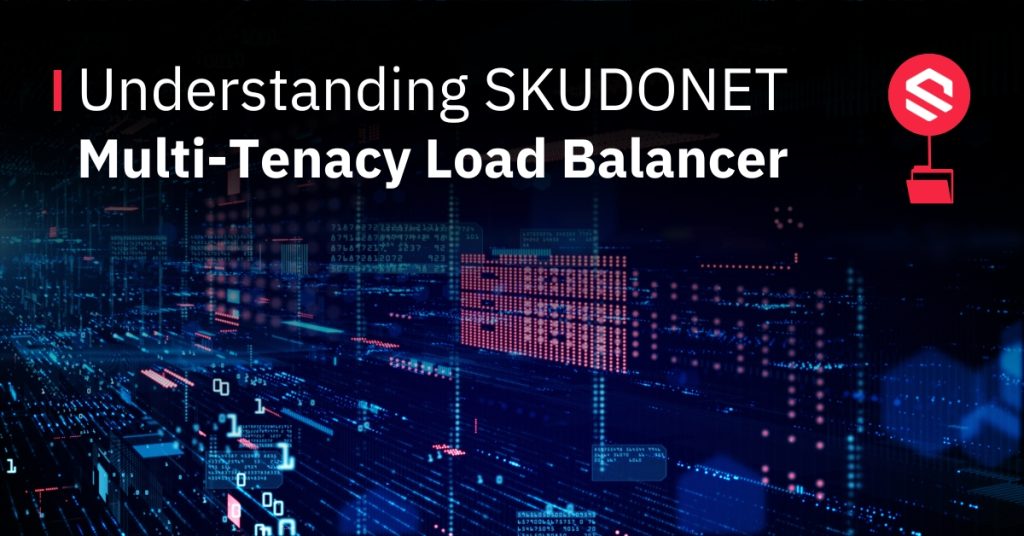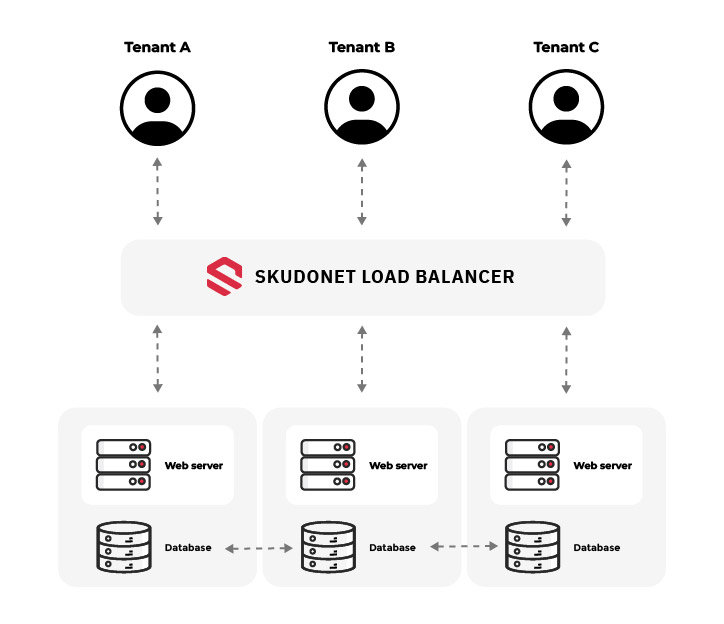As businesses embrace shared environments to optimize resources and reduce costs, the multi-tenancy load balancer plays a pivotal role in ensuring smooth and secure traffic distribution. This blog delves into the inner workings of a multi-tenancy load balancer and highlights the benefits it brings to modern infrastructures.
What is a Multi-Tenancy Load Balancer?
A multi-tenancy load balancer efficiently distributes traffic across multiple servers in a shared environment while maintaining strict separation between tenants (whether they are business units, clients, or departments). Unlike traditional load balancers, this solution ensures that the resources are allocated fairly and securely among tenants, each of whom has their own isolated virtual environment.
In practice, this is made possible through the concept of the virtual load balancer. Each tenant operates within a virtualized space that behaves like a dedicated load balancer, customized to their unique performance, security, and compliance needs. This approach maximizes resource efficiency and scalability, which is particularly useful in large-scale infrastructures.
How a Multi-Tenancy Load Balancer Works
In a multi-tenant environment, the load balancer must intelligently route incoming traffic based on the tenant’s unique requirements. Each tenant receives their own virtual load balancer, allowing for tailored configurations that suit their workload and security needs. These virtual instances ensure that traffic flows smoothly and securely, regardless of how many tenants are sharing the physical infrastructure.
With solutions like SKUDONET Load Balancer, this process becomes even more seamless. Automated traffic management ensures that load balancing is handled dynamically, reducing manual effort while maintaining peak performance and security standards.
Key Advantages of a Multi-Tenancy Load Balancer
1. Maximizing Resource Efficiency
A multi-tenancy load balancer eliminates the need for each tenant to have dedicated hardware, driving down infrastructure costs and improving overall efficiency.
2. Scalability On Demand
As tenant traffic grows, the load balancer can scale to meet increasing demand by spinning up additional virtual instances. This scalability ensures that performance remains steady even during peak loads.
3. Maintaining Security and Isolation
Even in shared environments, security remains a priority. A multi-tenancy load balancer ensures data isolation between tenants, preventing unauthorized access and protecting sensitive information.
4. Tailored Performance
Each tenant benefits from a dedicated virtual load balancer that can be customized to their specific performance and security requirements. This flexibility allows businesses to adapt quickly to changing needs without compromising on service quality.
5. Centralized Management
Managing multiple tenants becomes easier with a multi-tenancy load balancer, offering a single control point to oversee traffic distribution and security for all tenants, reducing administrative complexity.
Common Use Cases for Multi-Tenancy Load Balancers
1. Cloud Service Providers
Cloud platforms that support multiple clients benefit significantly from multi-tenancy load balancers. They enable efficient traffic distribution while ensuring that client data is isolated and protected.
2. Enterprise IT Environments
Large enterprises with multiple departments or business units can streamline their infrastructure with multi-tenancy, reducing the need for siloed hardware and simplifying the management of internal applications.
3. SaaS Platforms
Software-as-a-Service (SaaS) providers, who often serve multiple clients on the same platform, rely on multi-tenancy load balancing to distribute traffic and maintain high performance for each customer.
How SKUDONET Enhances Multi-Tenancy Load Balancing
At SKUDONET, we focus on delivering powerful and flexible solutions for managing complex multi-tenant environments. Our virtual load balancer technology is designed to keep traffic distribution efficient while offering the highest levels of tenant isolation and security. For businesses in multi-tenant environments, our solutions integrate seamlessly with existing infrastructure, providing automated, scalable, and secure traffic management.
With SKUDONET, businesses can streamline their operations, reduce infrastructure costs, and ensure consistent performance and security across all tenants.
Moving Forward with Multi Tenancy Load Balancers
Implementing a multi-tenancy load balancer offers significant advantages in terms of resource efficiency, scalability, and security. Whether you’re managing multiple clients, departments, or internal workloads, leveraging a solution like SKUDONET ensures that your infrastructure remains agile, secure, and ready for the demands of modern business.
If you’re looking to optimize your traffic management with a dedicated multi-tenancy load balancing solution, SKUDONET is here to help. Try our SKUDONET Enterprise Edition free for 30 days and see how effortlessly we can elevate your multi-tenant environment.



